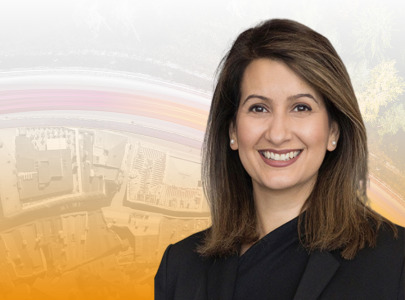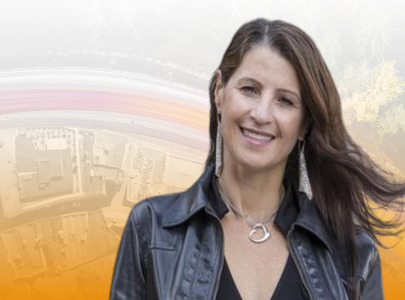Technology focus: the rise of bifacial solar in the Middle East’s power sector

Energy & Utilities has a look at the rapid growth of bifacial solar technology in some of the Middle East's largest solar projects
Bifacial solar panel technology is increasingly being adopted in the Middle East’s rapidly growing renewable energy market, with a number of the region’s latest projects containing bifacial photovoltaic (PV) panels.
The region offers great potential for bifacial technology thanks to its arid deserts, vast land space and year-round sunshine. Some of the new projects include Dubai-based developer Enerwhere’s 80kWp floating solar plant off the coast of Abu Dhabi, commissioned in February this year.
Abu Dhabi’s Masdar is also utilising bifacial panel technology for one of its largest projects under development, the 800MW third phase of the Mohammed bin Rashid (MBR) solar park in Dubai. Bifacial panels will provide 300MW of capacity for the third phase project.
“Bifacial has a lot of advantages in the region,” said Dr Ibraheem al-mansouri, Head of Engineering at Masdar Clean Energy in the UAE capital. “If you look back at history, Masdar was the first to propose bifacial in the region [in 2017]. When there is a new technology, people hesitate about the risks associated with it, but as a developer, we do in-depth analysis and try to act ahead of the times.”
Increased power
More power is generated from bifacial panels, compared to monofacial, as they capture the light reflection from both sides of the module. When the solar plant’s design, location, the ground’s albedo and the solar radius are optimum for bifacial panels, Al-mansouri believes the technology can create five and 20 percent more power than monofacial panels.
“We have other projects that are under development where we also use bifacial technology, such as in Uzbekistan with the 100MW Navoi project, and in Saudi Arabia where it’s under construction,” he added. “It’s starting to be the norm in the region – most projects have been using bifacial panels since 2019, including two in Oman. Our sand is very bright, so the reflection is very high, while in Europe, it’s very dark or grassy so it’s not as advantageous there.”
Although the bifacial technology was initially more expensive than monofacial panels, the price gap has closed considerably. Experts say the added cost is worthwhile, thanks to the higher yield and generating power. “The cost can be absorbed as you will have a better return in the end,” according to Al-mansouri. “So the generation is higher than the cost and it’s worth it.”
Growing market
According to Wood Mackenzie Power & Renewables’ first report focused on the bifacial solar market, there was a cumulative 5.4GW of bifacial solar capacity installed globally in early 2020, mostly in Asia.
The report projects a nearly equal share of deployment divided among Asia and North America in five years, with cumulative installed capacity growing tenfold.
“The technology was in development in the 1990s but it became more mainstream in the last few years, especially in 2018 when some companies started to offer it, and so did we,” said Mohamed Saady Dweik, Technical Services Manager – MEA at Jinko Solar, the world’s largest PV solar manufacturer. “The estimation now for 2020 is that bifacial will be 20 percent of the market share, which shows the progress of this technology.”
He spoke of the industry as reaching a level of maturity thanks to technology development and improvements over the past few years. “We see now that it is very required, especially for ground mount installations in our region,” Dweik noted. “So we see now many projects in Saudi Arabia, the UAE, and in Egypt, and other countries, where bifacial will really add value because we have a very suitable environment and weather conditions for this technology.”
Cost competitive
He estimates desert ground would lead to 15 to 20 percent additional energy yield from the bifacial modules, foreseeing even more potential in this part of the world. “The new tenders consider bifacial as an option and when we have more track record on the technology, then we will see more demand for it,” he explained. “It will become more mainstream and we also see the price gap between the traditional monofacial and the bifacial reaching less than two cents per watt, which is very good demand for this technology.”
Although it is still too premature for results on Jinko Solar’s large-scale projects in Saudi Arabia, the UAE and Egypt, the company has a few smaller projects in the UAE commissioned in December last year. And so far, the technology seems promising with estimated gains reaching between seven to 10 percent.
With half of Jinko Solar’s portfolio consisting of bifacial technology, Dweik has high hopes, estimating that it will be go beyond 20 percent of market share in the future.
“As every new technology introduced, there is always a concern about the track record and reliability because people tend to adopt the proven technology,” he said. “But this is the case in every new technology introduced in the market so the main challenge is convincing or educating the market on bifacial because designing a bifacial power plant is not the same as a traditional one.”
He mentioned additional considerations that need to be taken into account, including ground clearance, the pitch between the module rows, the albedo, as well as some electrical parameters and specifications. “Our main role in 2019 and this year is to highlight the differences and get more into market education,” he added. “Some people were sceptical about the technology because maybe they thought the price gap was big, and it wasn’t mature enough but now we see the market is going in that direction.”
Emerging markets
Experts believe Africa can also benefit from such a technology, in areas such as Sahel, Namibia, Mali and Mauritania. “The solar contribution in the African energy mix is huge,” said John van Zuylen, CEO of the Africa Solar Industry Association (AFSIA). “Historically, African countries are on average being fuelled 80 percent by fossil fuels and 20 percent by renewables, including hydro.”
And although PV still only accounts for a very small – around two percent – of installed capacity in the region, Zuylen spoke of ambitious projections and commitments of different governments for their energy mix in the next 10 to 20 years.
“You will also see that in terms of all the new installations, PV represents more than 50 percent,” he added. “So it will still remain in total a small percentage, it will grow over time, maybe reaching a total of 20 percent, but in terms of where the money is being invested today, this is where it is flowing in right now.”
He expects such growth to continue thanks to the batteries and storage, which has dropped in price. “You can produce solar for the night now, it’s more viable,” van Zuylen explained. “It’s a combination of solar getting cheaper every day, and storage that got significantly cheaper. The technical advantages are also improving and are more flexible, so everything is uniting to make your life better.”
Ultimately, the move is vital for many due to fluctuations in oil and gas prices and the urgent need of many governments in the Middle East to diversify their portfolio. “It’s not just about the economics, but it’s also about power security,” Dr Al-mansouri concluded.
“Part of the strategic plan for regional governments is to have renewable energy integrated in their power system because, for the time being, the oil and gas industry is subsidised. PVs and renewable energy have the upper hand today and they have more potential for the future”.
Written by Caline Malek
Energy & Utilities - Middle East and Africa Market Outlook Report 2024.
This must-have report for industry players offers a thorough understanding of the latest developments, challenges, and opportunities in the region, supported by data, analysis, and expert insights.








